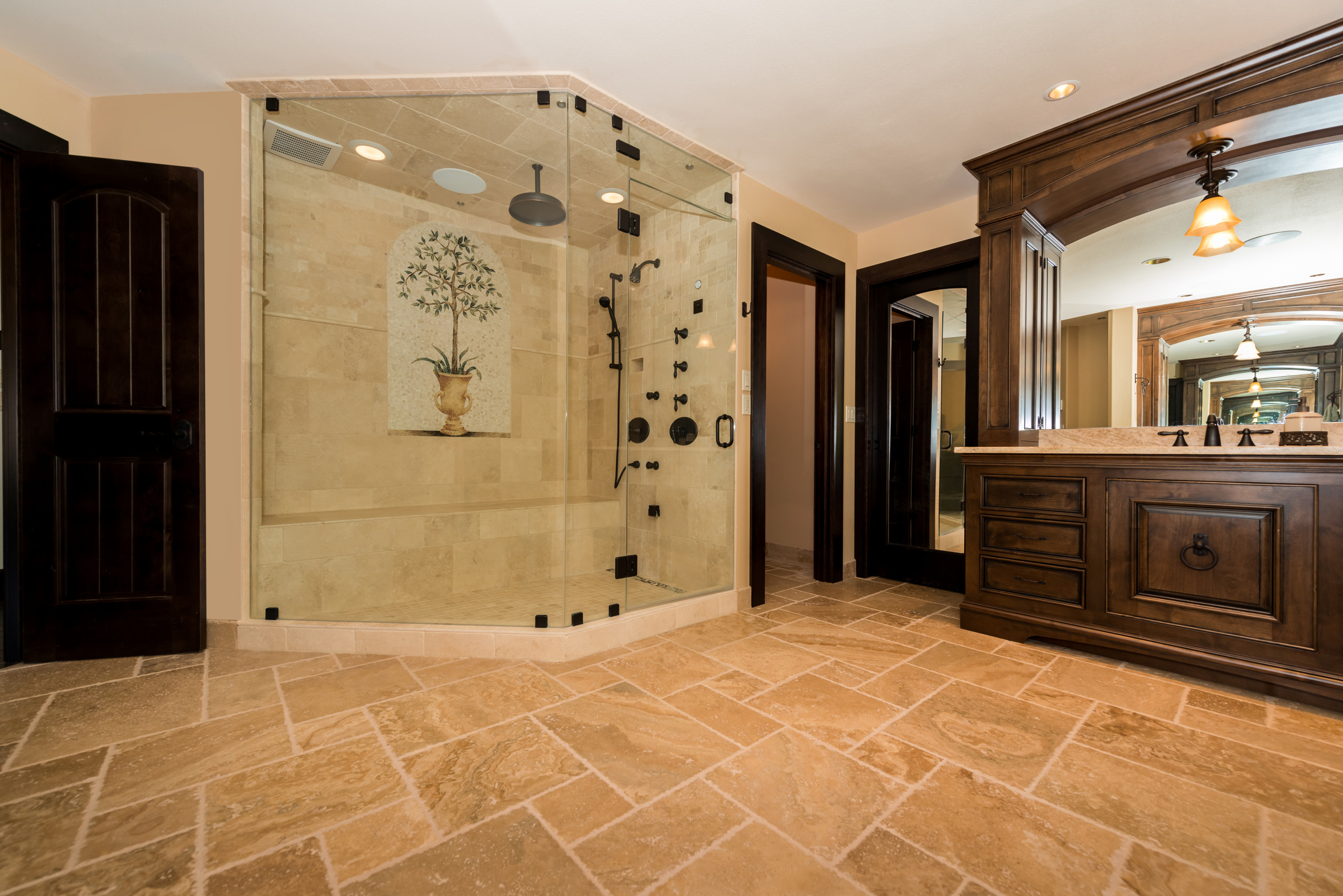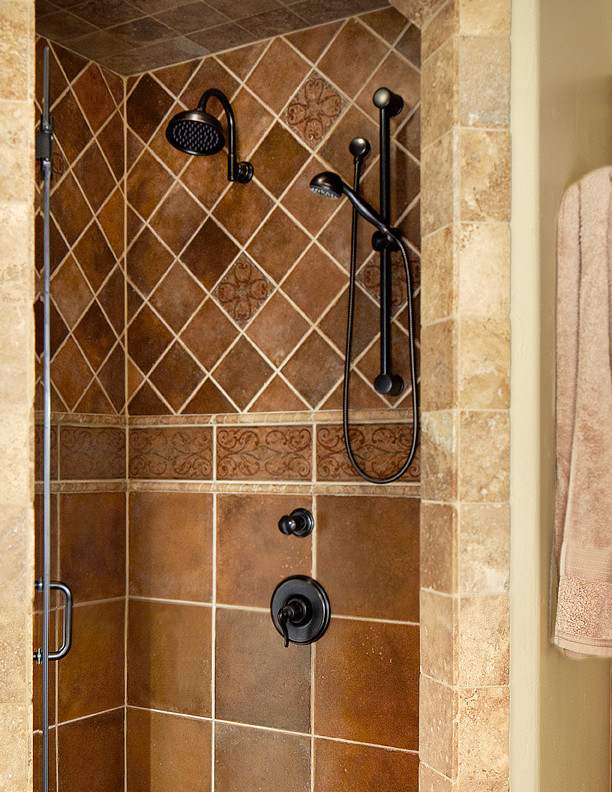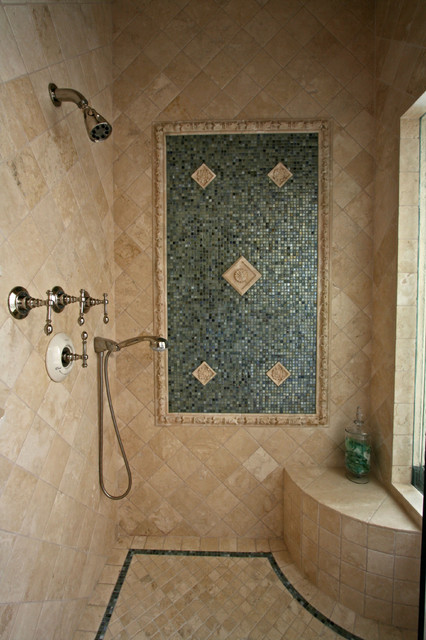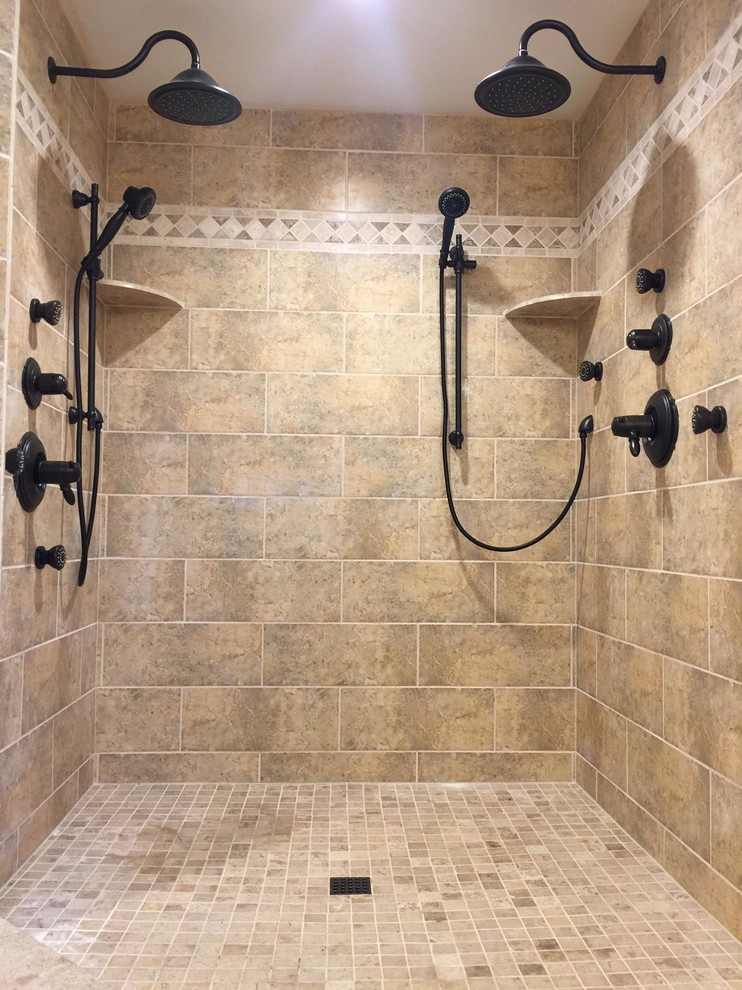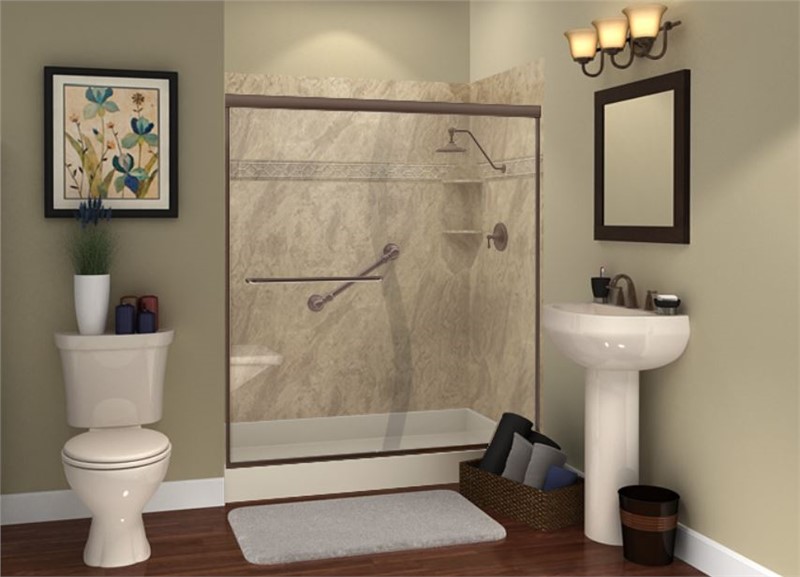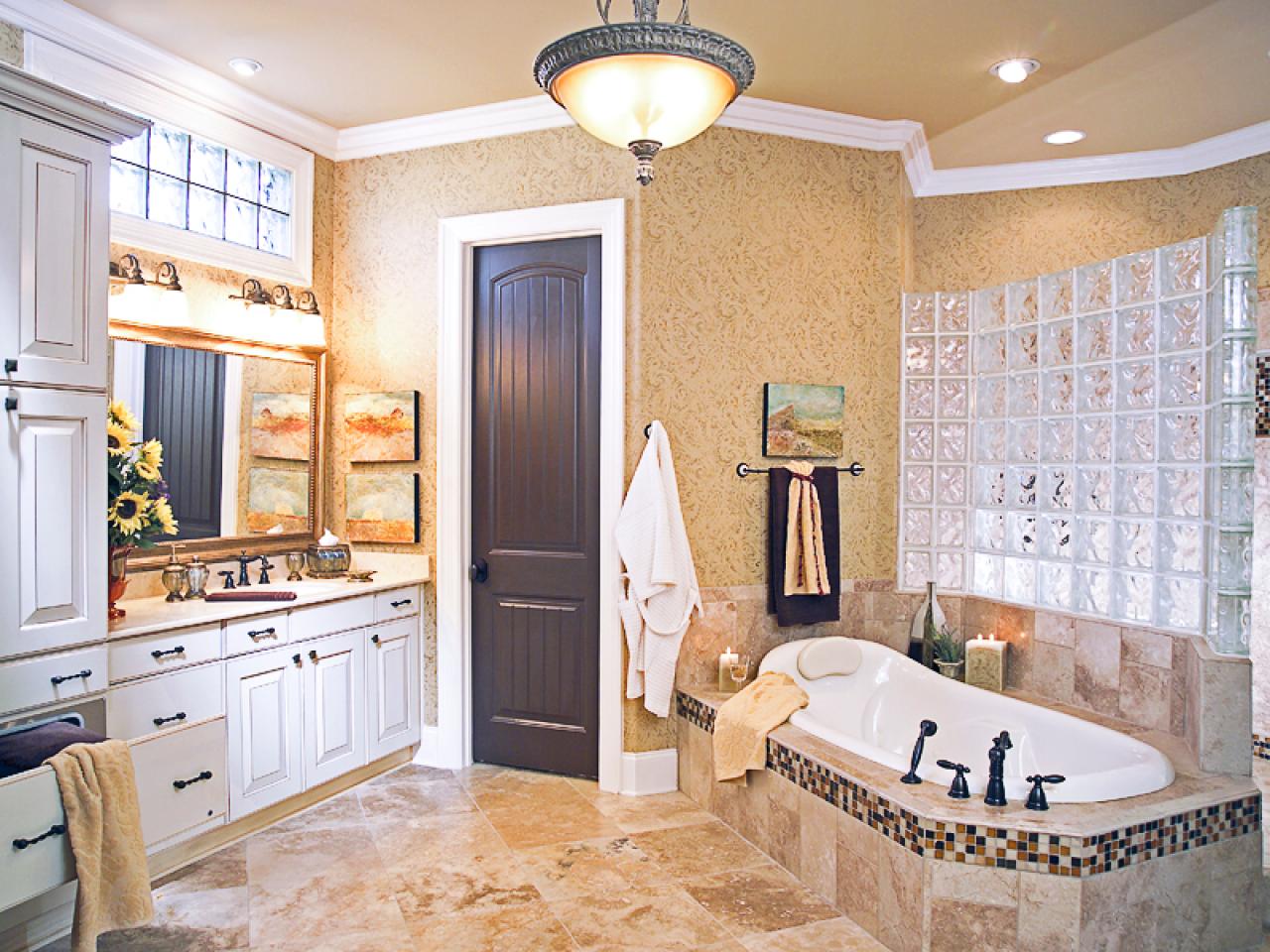Tuscan Bathroom Tile Designs: Capturing the Essence of Italy
When I think about Tuscan design, the warmth, earthiness, and timeless charm of the Italian countryside come to mind. Tuscan bathroom tile designs are a beautiful way to bring that serene, rustic elegance into your home. Whether you’re remodeling or starting from scratch, here are some of my favorite ways to capture the essence of Tuscany in your bathroom through tile designs.
- Embrace Natural Materials: Tuscan design is all about using natural materials that reflect the region’s rustic beauty. Stone, terracotta, and ceramic are staples in Tuscan tile designs. When I was choosing tiles, I focused on materials that would bring a warm, earthy feel to my bathroom. These materials not only add texture but also age beautifully, giving your bathroom a lived-in, authentic look over time.
- Opt for Warm, Earthy Colors: The colors of Tuscany are inspired by the landscape—think warm terracottas, soft golds, and rich browns. I found that sticking to this palette helped create a cohesive, inviting space. Even when using different tile types, the consistent use of warm colors tied everything together, giving my bathroom that unmistakable Tuscan vibe.
- Incorporate Hand-Painted Details: Hand-painted tiles are a hallmark of Tuscan design. They add an artistic touch and can serve as beautiful focal points in your bathroom. I decided to incorporate a few hand-painted tiles in my shower area, and it made a world of difference. These little artistic details brought a touch of Italy right into my home.
- Use Mosaic Patterns for Visual Interest: Mosaics are a great way to add complexity and texture to your bathroom. I used a mix of small stone and glass tiles to create a mosaic border around my bathroom mirror, and it instantly became a statement piece. The intricate patterns of mosaics are reminiscent of traditional Italian craftsmanship, adding depth and character to the space.
- Consider Textured Tiles for a Rustic Feel: In Tuscan design, texture plays a crucial role. Rough, textured tiles add an element of rustic charm, making the bathroom feel cozy and grounded. I went with textured stone tiles for the floor, and they added just the right amount of ruggedness to balance the elegance of the marble countertops.
- Combine Different Tile Sizes and Shapes: Mixing and matching tile sizes and shapes can create visual interest and prevent the space from feeling too uniform. In my bathroom, I used large terracotta tiles on the floor and smaller, square tiles in the shower. The contrast between the different shapes and sizes created a dynamic, visually appealing space.
- Don’t Forget About the Details: The finishing touches can make or break your Tuscan bathroom design. I paid extra attention to details like grout color, trim, and accents. Choosing a warm-toned grout helped blend the tiles seamlessly, while decorative trim added a polished, finished look. These small details brought everything together, creating a cohesive and authentic Tuscan-inspired bathroom.
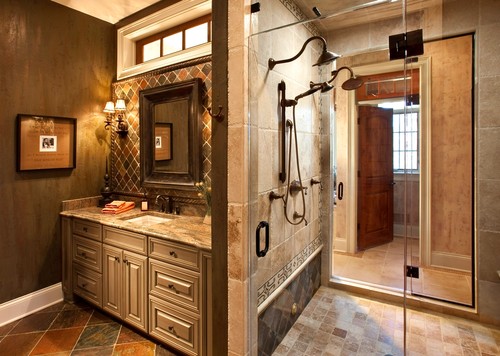
Classic Terracotta Tiles: The Heart of Tuscan Aesthetics
When I embarked on my journey to create a Tuscan-inspired bathroom, the first thing that came to mind was terracotta tiles. Terracotta, with its rich, earthy tones, is truly the heart of Tuscan aesthetics. Here’s how I incorporated these classic tiles into my bathroom design.
Choosing the Right Terracotta Tile
The first step was finding the perfect terracotta tiles. I wanted tiles that had a natural, handcrafted look, so I opted for ones with slight color variations and imperfections. These tiles added warmth and authenticity to my bathroom, making the space feel like a rustic Tuscan retreat.
Using Terracotta for the Flooring
Terracotta is a traditional choice for flooring in Tuscan homes, and it was a must-have for my bathroom. I loved how the warm tones of the terracotta tiles complemented the other design elements. The tiles provided a durable, slip-resistant surface, making them perfect for bathroom floors.
Incorporating Terracotta in the Shower Area
To extend the Tuscan theme into the shower, I used smaller terracotta tiles on the shower floor. The tiles added a cozy, spa-like feel to the space. Pairing them with stone walls created a beautiful contrast that was both rustic and luxurious.
Creating a Feature Wall with Terracotta Tiles
To make a statement, I decided to use terracotta tiles to create a feature wall behind the bathtub. The rich, warm color of the terracotta provided a stunning backdrop, making the bathtub area the focal point of the bathroom. It was the perfect way to showcase the natural beauty of the tiles.
Enhancing the Design with Decorative Terracotta Accents
In addition to using terracotta tiles for flooring and walls, I added decorative terracotta accents to enhance the design. These included terracotta trim around the mirror and a terracotta border along the vanity countertop. These small touches tied the whole room together, reinforcing the Tuscan theme.
Caring for Terracotta Tiles
Terracotta tiles require a bit of maintenance to keep them looking their best. I made sure to seal the tiles to protect them from moisture and staining. Regular cleaning with a gentle, pH-neutral cleaner helped maintain their natural beauty. With proper care, these tiles will continue to bring warmth and charm to my bathroom for years to come.
Natural Stone Elegance: Incorporating Marble and Travertine
In my quest to bring a touch of Tuscany to my bathroom, natural stone tiles, particularly marble and travertine, played a pivotal role. These materials exude elegance and timelessness, making them perfect for a Tuscan-inspired bathroom.
Why Choose Marble and Travertine?
Marble and travertine are synonymous with luxury, and their natural beauty is unmatched. I chose these stones because they are deeply rooted in Italian design, particularly in Tuscany. The veins in the marble and the subtle textures of travertine add sophistication and depth to any space.
Using Marble for a Luxurious Touch
Marble instantly elevates the look of any bathroom. I used marble tiles for the vanity countertop and the bathtub surround. The cool, smooth surface of marble contrasted beautifully with the warm tones of the terracotta tiles on the floor, creating a balanced and harmonious space.
Incorporating Travertine for a Rustic Appeal
Travertine is more rustic and earthy compared to marble, making it a perfect choice for a Tuscan bathroom. I used travertine tiles for the shower walls and the bathroom floor. The natural variations in color and texture added a touch of rustic charm, while the stone’s durability made it ideal for wet areas.
Combining Marble and Travertine
To create a cohesive design, I decided to combine both marble and travertine in my bathroom. The key was to balance the two materials so that they complemented rather than competed with each other. The marble added a touch of luxury, while the travertine grounded the design with its earthy tones.
Creating a Stone Mosaic
One of the highlights of my bathroom design was a mosaic made from small pieces of marble and travertine. I used this mosaic as an accent border around the shower area and as a decorative element on the floor. The intricate patterns added visual interest and tied together the different stone elements in the room.
Maintaining Natural Stone Tiles
Natural stone requires regular maintenance to keep it looking pristine. I made sure to seal both the marble and travertine tiles to protect them from moisture and stains. Gentle cleaning with a stone-specific cleaner helped preserve their natural beauty. With proper care, these stones will continue to add elegance to my bathroom for years to come.
Hand-Painted Tiles: Adding Artistic Flourishes to Your Bathroom
One of the most charming aspects of Tuscan design is the use of hand-painted tiles. These tiles are like little works of art, adding personality and flair to any space. Here’s how I incorporated hand-painted tiles into my Tuscan bathroom.
Choosing the Perfect Hand-Painted Tiles
When selecting hand-painted tiles, I looked for designs that reflected the colors and motifs of Tuscany. I was drawn to tiles with floral patterns, vines, and geometric designs. The imperfections in the hand-painting process added to their charm, giving my bathroom a unique and personal touch.
Creating a Focal Point with Hand-Painted Tiles
To make the hand-painted tiles stand out, I used them to create a focal point in the bathroom. I chose a section of the wall above the vanity and arranged the tiles in a decorative pattern. The vibrant colors and intricate designs drew the eye, making it a true statement piece.
Incorporating Hand-Painted Tiles into the Shower Niche
Another way I used hand-painted tiles was in the shower niche. I lined the back of the niche with these tiles, adding a pop of color and interest to the shower area. It was a small detail, but it made a big impact, bringing a touch of Tuscany into the space.
Mixing Hand-Painted Tiles with Plain Tiles
To avoid overwhelming the space, I mixed the hand-painted tiles with plain, neutral tiles. This allowed the hand-painted tiles to shine without dominating the design. The combination created a balanced look that was both artistic and cohesive.
Using Hand-Painted Tiles as a Border
I also used hand-painted tiles as a border along the edge of the bathroom floor and around the mirror. The tiles added a decorative element that tied the whole room together. The border was a simple yet effective way to incorporate the beauty of hand-painted tiles without overwhelming the space.
Caring for Hand-Painted Tiles
Hand-painted tiles require special care to maintain their beauty. I made sure to clean them gently with a soft cloth and a mild cleaner to avoid damaging the paint. Sealing the tiles helped protect the paint from moisture and wear. With proper care, these tiles will continue to add artistic flair to my bathroom for years to come.
Warm Earth Tones: The Signature Palette of Tuscan Design
When it comes to Tuscan design, warm earth tones are at the heart of the aesthetic. These colors create a cozy, inviting atmosphere that makes you feel like you’re in the Italian countryside. Here’s how I used warm earth tones to bring a touch of Tuscany to my bathroom.
Choosing a Warm Color Palette
The first step was selecting a warm color palette that reflected the Tuscan landscape. I chose shades of terracotta, ochre, and burnt sienna for the tiles. These colors added warmth and richness to the space, creating a welcoming and comfortable atmosphere.
Using Earth Tones for the Floor Tiles
For the floor, I chose terracotta tiles in a deep, warm shade. The color grounded the space and provided a strong foundation for the rest of the design. The earthy tone of the tiles added to the rustic, Tuscan feel I was aiming for.
Incorporating Earth Tones in the Wall Tiles
I extended the warm color palette to the wall tiles as well. I chose tiles in shades of beige and golden yellow to complement the terracotta floor. The soft, warm tones of the wall tiles created a harmonious and cohesive look throughout the bathroom.
Adding Accents in Rich, Warm Colors
To add depth and interest, I incorporated accent tiles in deeper, richer shades. I used these accent tiles to create a border around the shower and as a decorative element in the backsplash. The contrast between the warm earth tones and the darker accents added visual interest and dimension to the space.
Balancing Warm Tones with Natural Light
To prevent the warm earth tones from making the space feel too dark or heavy, I made sure to maximize natural light in the bathroom. I kept the window treatments light and airy, allowing sunlight to flood the space and enhance the warmth of the tiles. The natural light balanced the warm tones, creating a bright and inviting atmosphere.
Complementing Earth Tones with Natural Materials
To complete the look, I paired the warm earth tones with natural materials like wood and stone. The wooden vanity and stone countertops complemented the tiles beautifully, adding to the rustic, Tuscan feel. The combination of warm colors and natural materials created a space that was both cozy and sophisticated.
Rustic Mosaic Patterns: Creating Intricate Visual Interest
Mosaic patterns are a hallmark of Tuscan design, adding intricate detail and visual interest to any space. When I was designing my Tuscan bathroom, incorporating rustic mosaic patterns was a must. Here’s how I used mosaics to enhance the beauty of my bathroom.
Choosing the Right Mosaic Tiles
The first step was selecting the perfect mosaic tiles. I looked for tiles in earthy tones that reflected the colors of Tuscany. I was drawn to small stone and glass tiles that had a rustic, handcrafted look. These tiles added texture and depth to the space, making the mosaics feel like a natural extension of the Tuscan design.
Creating a Mosaic Backsplash
One of my favorite features in the bathroom is the mosaic backsplash behind the vanity. I used a mix of small stone and glass tiles in warm, earthy tones to create a mosaic pattern that adds visual interest and complexity to the space. The intricate design of the mosaic draws the eye and serves as a stunning focal point in the bathroom.
Incorporating Mosaics into the Shower Floor
I also used mosaic tiles on the shower floor to add texture and grip. The small tiles created a non-slip surface that was both functional and beautiful. The mosaic pattern added a touch of rustic charm to the shower, making it feel like a luxurious yet grounded space.
Using Mosaics as a Border
To tie the design together, I used mosaic tiles as a border around the bathroom. The border added a decorative element that framed the space and gave it a finished, polished look. The small, intricate patterns of the mosaics added a touch of elegance to the rustic design.
Combining Different Tile Sizes and Shapes
To add variety and interest, I mixed different sizes and shapes of mosaic tiles. I used larger tiles for the main areas and smaller mosaic tiles for accents and borders. The contrast between the different sizes and shapes created a dynamic, visually appealing design that kept the space from feeling too uniform.
Caring for Mosaic Tiles
Mosaic tiles require regular maintenance to keep them looking their best. I made sure to seal the tiles to protect them from moisture and staining. Regular cleaning with a gentle, pH-neutral cleaner helped maintain their natural beauty. With proper care, these intricate mosaic patterns will continue to add visual interest and charm to my bathroom for years to come.
Combining Tiles with Tuscan Décor: Achieving a Harmonious Look
When I set out to design my Tuscan-inspired bathroom, I knew that the tiles would be a key element, but they needed to work in harmony with the rest of the décor. Here’s how I combined tiles with Tuscan décor to create a cohesive and inviting space.
Choosing Complementary Décor Elements
The first step was selecting décor elements that complemented the tiles. I chose rustic wooden furniture, wrought iron fixtures, and stone accessories that reflected the Tuscan style. These elements added warmth and texture, creating a cozy, inviting atmosphere that complemented the earthy tones of the tiles.
Balancing Tiles with Textiles
Textiles play a crucial role in softening the look of the tiles and adding warmth to the space. I chose plush, terracotta-colored towels and a textured, neutral-toned rug to balance the hard surfaces of the tiles. The textiles added a layer of comfort and luxury, making the bathroom feel like a relaxing retreat.
Incorporating Greenery
Adding greenery is a great way to bring a touch of nature into a Tuscan-inspired bathroom. I placed potted plants on the windowsill and a small olive tree in the corner of the room. The green plants added a pop of color and freshness, complementing the earthy tones of the tiles and bringing the space to life.
Using Lighting to Enhance the Atmosphere
Lighting is key to creating the right ambiance in a Tuscan bathroom. I chose warm, soft lighting to enhance the warmth of the tiles and create a cozy atmosphere. A wrought iron chandelier added a touch of elegance, while wall sconces provided soft, ambient light. The lighting highlighted the beauty of the tiles and the décor, tying the whole room together.
Accessorizing Thoughtfully
The right accessories can make all the difference in a Tuscan bathroom. I added vintage-inspired mirrors, ceramic jars, and terracotta pottery to enhance the rustic charm of the space. These accessories added personality and character, making the bathroom feel like a well-loved, lived-in space.
Maintaining the Cohesive Look
To keep the look cohesive, I made sure that all the elements in the bathroom—tiles, décor, textiles, and accessories—worked together harmoniously. I stuck to a consistent color palette and chose materials that complemented each other. The result was a bathroom that felt warm, inviting, and authentically Tuscan. With a thoughtful approach to combining tiles and décor, I was able to create a space that is not only beautiful but also functional and comfortable.
Tile Bathroom Shower – Mediterranean – Bathroom
Tuscan Bathroom ideas tuscan bathroom, tuscan, tuscan decorating
Budget-Friendly Bathroom Remodel Offers a Fresh
Tuscan Shower – Mediterranean – Bathroom
How to Design a Tuscan-Style Bath Space – Bath Planet Blog
Spanish-Style Bathrooms: Pictures, Ideas & Tips
Related Posts:


